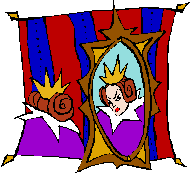
Additional Access Points in Cataloging
Records,
Part 1
In previous sections of this course, we have looked at the various types of information that are included in a cataloging record. One of the purposes of including this information is to uniquely identify each title in the library collection. Another purpose is to provide access to the materials in the library collection to both the library patrons and the library staff.
With computer catalogs, one of the ways that access can be provided is through general keyword searches that cover all of the words listed in the cataloging record. This type of search would pick up terms in the various pieces of cataloging information included in the descriptive paragraph, the physical description and series areas, and the notes areas.

For example, if a patron was doing a general keyword search for "Sleeping Beauty," and a work on fairy tales had a contents note with the titles of stories including "Sleeping Beauty," the patron would locate that record.
Sometimes, patrons donít want to use the general keyword type of search, however. Libraries have had other ways of providing access to the information in a cataloging record for a long time. One way has been the subject headings that we have studied in this course section. Another way is the additional access points that are found on every card and computer catalog record in libraries. These additional access points include items such as additional authors or illustrators, editors, titles, subtitles, series titles, contents titles, and other related options. You may also hear these access points referred to as Added Entries, which originally meant added card entries that would be put alphabetically in the card catalog for each of these access points. This phrase has carried over into use with computer records, also.
Click the arrow below to continue to the next page